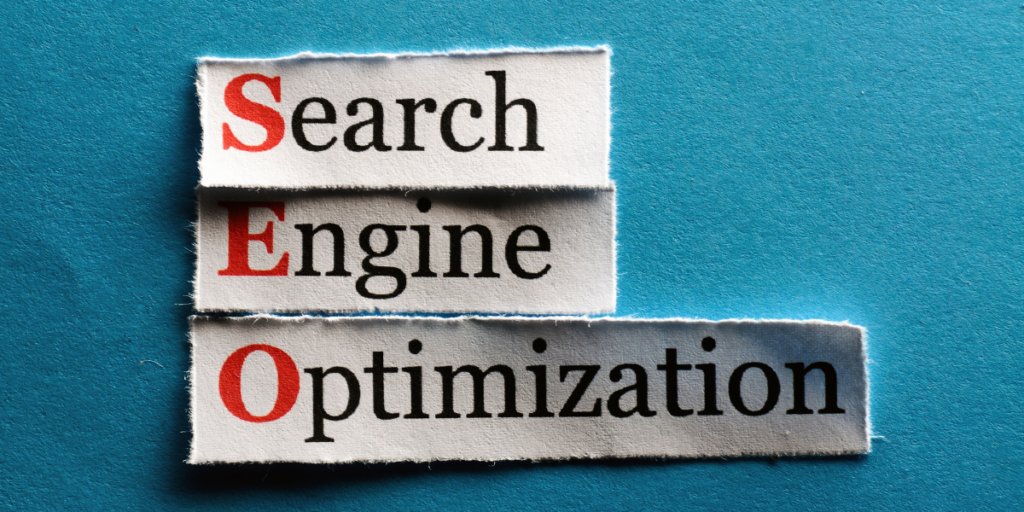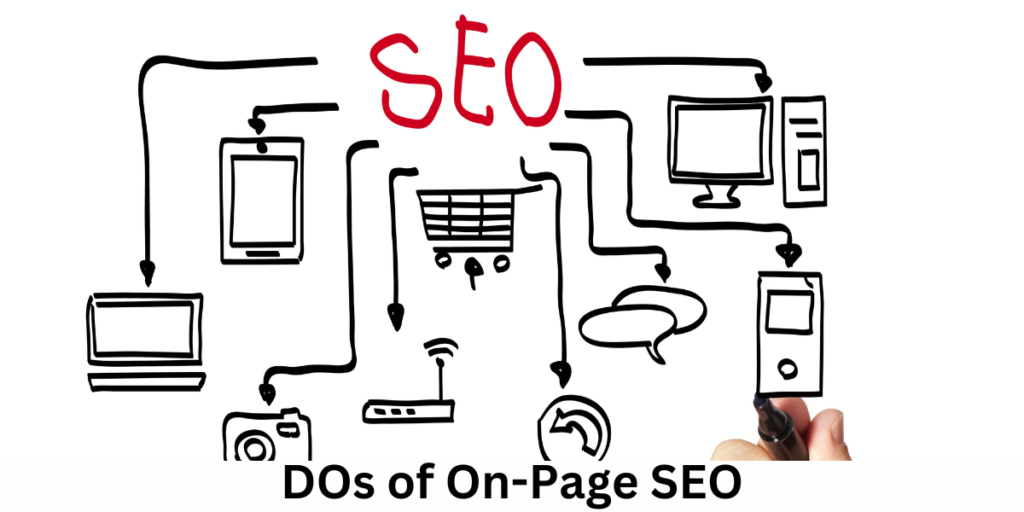How to Conduct a Comprehensive SEO Audit for Your Website

Performing a comprehensive SEO audit is essential for the success of any website. It is a process that enables website owners to evaluate their website’s visibility, performance, and overall SEO health. A thorough SEO audit will identify all the issues that might be holding the website back and provide insights on how to improve its ranking and visibility on search engines.
Here’s a step-by-step guide on how to conduct a comprehensive SEO audit for your website:
- Set Your Goals

Before you start the SEO audit process, you need to determine your goals. Ask yourself why you’re conducting an SEO audit, what are your expectations, and what you’re hoping to achieve. Your goals will guide you throughout the process and help you stay focused on what matters most.
- Evaluate Your Website’s Performance

The first step is to evaluate your website’s performance. You can use Google Analytics to get a clear picture of how your website is performing. Analyze your website’s traffic, bounce rate, and average session duration. This will give you an idea of how your website is engaging your visitors and how much time they are spending on your site.
- Conduct a Technical SEO Audit

Technical SEO audit involves evaluating your website’s technical aspects such as crawlability, indexability, and site speed. You can use tools like Screaming Frog, Google Search Console, and GTmetrix to conduct a technical SEO audit. Evaluate your website’s robots.txt file, sitemap, HTTP status codes, and URL structure.
- Analyze Your Website’s On-Page SEO

On-page SEO includes optimizing individual pages of your website for specific keywords. Analyze your website’s metadata, headings, content, and keyword usage. Ensure that your website’s content is high-quality, relevant, and optimized for your target keywords.
- Evaluate Your Website’s Off-Page SEO

Off-page SEO involves analyzing your website’s external links, social media presence, and other factors that affect your website’s authority and relevance. Analyze your website’s backlinks, social media engagement, and online reputation.
- Conduct a Competitor Analysis

Conducting a competitor analysis will give you insights into what your competitors are doing and how you can improve your website’s SEO strategy. Analyze your competitor’s website, their on-page and off-page optimization, and their keyword strategy.
- Develop an SEO Strategy

Based on the findings of your SEO audit, develop a comprehensive SEO strategy. Set clear goals and objectives, identify the target keywords, and prioritize the changes you need to make on your website. Ensure that your SEO strategy is aligned with your overall business objectives.
- Implement the Changes

After developing your SEO strategy, it’s time to implement the changes. Start by fixing the technical issues identified in the technical SEO audit, such as optimizing your website’s speed and fixing broken links. Then, focus on optimizing your website’s on-page SEO by improving your website’s metadata, headings, and content. Finally, work on building high-quality backlinks and improving your social media presence to boost your off-page SEO.
- Monitor Your Website’s Performance

SEO is a continuous process, and it’s crucial to monitor your website’s performance regularly. Use Google Analytics and other SEO tools to track your website’s traffic, rankings, and engagement. Monitor the impact of the changes you made and adjust your SEO strategy accordingly.
- Stay Up-to-Date with SEO Trends

SEO is constantly evolving, and it’s essential to stay up-to-date with the latest trends and updates. Follow industry experts and read authoritative SEO blogs to stay informed about the latest best practices and techniques. This will enable you to adjust your SEO strategy accordingly and stay ahead of the competition.

Conclusion
conducting a comprehensive SEO audit is a critical process for any website owner who wants to improve their website’s ranking and visibility on search engines. By following the steps outlined above, you can conduct a thorough SEO audit, develop an effective SEO strategy, and stay ahead of the competition. Remember to implement the changes, monitor your website’s performance, and stay up-to-date with the latest SEO trends to achieve long-term success.
The Role of Social Media in SEO: How to Leverage Your Social Channels for Better Rankings

Social media has become an integral part of our lives, and it has also changed the way we do business. One of the ways social media can be used is to improve search engine optimization (SEO). In this blog post, we will discuss the role of social media in SEO and how to leverage your social channels for better rankings.
What is SEO?

Search engine optimization (SEO) is the process of optimizing a website to rank higher in search engine results pages (SERPs). The goal of SEO is to increase the visibility of a website to potential customers and increase traffic to the website. The higher a website ranks in search engine results, the more likely it is that people will click on the website and become customers.
What is Social Media?

Social media refers to websites and applications that allow users to create and share content or to participate in social networking. Social media platforms are used for various purposes, such as sharing information, connecting with friends, and promoting products or services.
The Role of Social Media in SEO
Social media can play a crucial role in SEO by increasing the visibility of a website and driving traffic to it. Social media signals, such as likes, shares, and comments, can help search engines understand the popularity and relevance of a website’s content. This, in turn, can lead to better rankings in search engine results.
Additionally, social media can help build backlinks to a website. Backlinks are links from other websites that point to a particular webpage. Search engines consider backlinks as a vote of confidence in a website’s content. The more high-quality backlinks a website has, the higher it will rank in search engine results.
How to Leverage Your Social Channels for Better Rankings
Here are some ways to leverage your social channels for better SEO:
- Optimize your social media profiles: Make sure your social media profiles are complete and optimized for SEO. Use relevant keywords in your profile descriptions, and include links to your website.
- Share high-quality content: Share high-quality content that is relevant to your audience. This will encourage people to engage with your content and share it, which can lead to more backlinks to your website.
- Build relationships with influencers: Influencers are people who have a large following on social media. Building relationships with influencers in your industry can help you reach a wider audience and get more backlinks to your website.
- Use social media ads: Social media ads can help increase the visibility of your website and drive traffic to it. You can target specific audiences with your ads based on demographics, interests, and behaviors.
- Monitor social media analytics: Monitor your social media analytics to see which content is performing well and which is not. Use this information to improve your content and engagement strategies.
- Encourage social sharing: Encourage your audience to share your content on social media by including social sharing buttons on your website and blog posts. This can help increase the visibility of your content and drive more traffic to your website.
- Use hashtags: Hashtags can help increase the visibility of your content on social media. Use relevant hashtags in your posts to reach a wider audience.
- Engage with your audience: Engage with your audience by responding to comments and messages. This can help build a loyal following and increase engagement with your content.
- Use social media to promote your content: Use your social media channels to promote your content, such as blog posts, videos, and infographics. This can help increase the visibility of your content and drive more traffic to your website.
- Monitor your brand mentions: Monitor your brand mentions on social media to see what people are saying about your brand. This can help you identify areas for improvement and respond to customer feedback.
Conclusion
social media can play a significant role in SEO when used strategically. By optimizing your social media profiles, sharing high-quality content, building relationships with influencers, using social media ads, monitoring social media analytics, encouraging social sharing, using hashtags, engaging with your audience, promoting your content on social media, and monitoring brand mentions, you can leverage your social channels for better rankings and drive more traffic to your website.
The Top SEO Strategies for E-commerce Websites in 2023

Introduction: As more businesses move online and competition for visibility increases, search engine optimization (SEO) becomes increasingly important for e-commerce websites. SEO is the process of optimizing your website’s content and structure to rank higher on search engine results pages (SERPs) and attract more organic traffic. In this blog, we’ll discuss the top SEO strategies for e-commerce websites in 2023.

- Optimize Your Product Pages: Product pages are the most important pages on your e-commerce website as they are the ones that generate revenue. Therefore, optimizing your product pages is crucial for your SEO success. Start by optimizing your product titles and descriptions with relevant keywords that users are searching for. Use high-quality product images and videos and ensure that your pages load quickly.
- Create High-Quality Content: Creating high-quality content is one of the most effective SEO strategies for e-commerce websites. By publishing blog posts, videos, and other types of content that provide value to your audience, you can attract more organic traffic and improve your search engine rankings. Moreover, having a blog can help you target long-tail keywords that your product pages may not be able to rank for.
- Improve Your Website’s User Experience: Search engines prefer websites that provide a great user experience, so it’s essential to optimize your website accordingly. Ensure that your website is mobile-friendly and has a fast loading time. Make it easy for users to navigate your website, find the information they need, and make purchases. You can also add features like live chat and product recommendations to improve the user experience.
- Build High-Quality Backlinks: Backlinks are still one of the most important factors for SEO success. Therefore, it’s essential to build high-quality backlinks to your e-commerce website. Start by creating valuable content that other websites will want to link to. You can also reach out to other websites in your industry and ask for a backlink. However, it’s crucial to ensure that the websites linking to you are trustworthy and relevant.
- Utilize Social Media: Social media is an excellent platform for promoting your e-commerce website and driving traffic to it. By creating engaging content and sharing it on social media, you can attract more followers, increase brand awareness, and generate more traffic to your website. Moreover, having a social media presence can also help you build backlinks to your website.
- Use Schema Markup: Schema markup is a code that helps search engines understand the content on your website better. By using schema markup, you can provide search engines with additional information about your products, such as price, availability, and reviews. This can help your product pages rank higher on SERPs and attract more organic traffic.
- Optimize Your Site for Voice Search: As voice assistants like Alexa and Siri become more prevalent, optimizing your e-commerce website for voice search can help you attract more organic traffic. Voice search queries tend to be longer and more conversational than traditional typed searches, so optimizing your website for long-tail keywords and natural language can help you rank higher on voice search results.
- Implement a Local SEO Strategy: If you have a physical store or serve a specific geographic area, implementing a local SEO strategy can help you attract more local customers. This includes optimizing your Google My Business listing, building local citations, and creating content that targets local keywords. By appearing in local search results, you can attract more foot traffic to your physical store and drive more online sales.
- Use Video Marketing: Video marketing can be a powerful tool for e-commerce SEO. By creating product videos and how-to guides, you can attract more organic traffic and keep users engaged on your website for longer periods. Moreover, videos can help you build backlinks and improve your social media presence.
- Monitor Your Analytics: Finally, it’s essential to monitor your website’s analytics to track your SEO progress and identify areas for improvement. This includes tracking your website’s organic traffic, bounce rate, conversion rate, and other key metrics. By analyzing your website’s performance, you can adjust your SEO strategy and ensure that you’re on track to meet your goals.
Conclusion

implementing these top SEO strategies for e-commerce websites in 2023 can help you improve your search engine rankings, attract more organic traffic, and generate more revenue. Remember to optimize your product pages, create high-quality content, improve your website’s user experience, build high-quality backlinks, utilize social media, use schema markup, optimize for voice search, implement a local SEO strategy, use video marketing, and monitor your analytics. By following these strategies, you’ll be well on your way to SEO success in 2023 and beyond.
How to Use Video Marketing to Boost Your SEO: Tips and Strategies for Success

Video marketing has become an increasingly popular way for businesses to engage with their audience and promote their products and services. However, did you know that it can also be a powerful tool to boost your search engine optimization (SEO) efforts? In this blog, we’ll discuss some tips and strategies for using video marketing to improve your SEO and drive more traffic to your website.
- Optimize Your Videos for SEO

Like any other piece of content, your videos should be optimized for SEO. This means using relevant keywords in your video titles, descriptions, and tags. Doing so will help search engines understand what your video is about and rank it accordingly.
You should also make sure your videos are mobile-friendly, as more and more people are using their mobile devices to watch videos. This means optimizing your videos for smaller screens, using subtitles or captions, and ensuring fast loading times.
- Create High-Quality Videos

Creating high-quality videos is essential for both engaging your audience and boosting your SEO. When it comes to video marketing, quality trumps quantity. This means focusing on creating fewer, but better videos.
To create high-quality videos, you should invest in good equipment, such as a high-resolution camera and microphone, and use good lighting. You should also focus on creating engaging and informative content that provides value to your audience.
- Use Video Transcripts

Search engines can’t watch videos, but they can read the text on your website. This is where video transcripts come in. A video transcript is a written version of your video’s audio that search engines can crawl and index.
By including video transcripts on your website, you can help search engines understand the content of your videos and rank them accordingly. You can also improve the user experience by providing captions or subtitles for your videos.
- Promote Your Videos on Social Media

Social media is a powerful tool for promoting your videos and driving traffic to your website. By sharing your videos on social media platforms such as Facebook, Twitter, and Instagram, you can reach a wider audience and increase engagement with your brand.
Make sure to optimize your videos for each platform, as the optimal video length and format may vary. You should also use relevant hashtags and captions to help your videos get discovered by new audiences.
- Include Videos on Your Website

Finally, one of the best ways to use video marketing to boost your SEO is by including videos on your website. This not only provides valuable content for your audience but also helps improve your website’s ranking in search results.
Make sure to include videos on relevant pages of your website, such as product pages or blog posts. You should also optimize your video thumbnails and descriptions to make them more appealing to users and search engines.
- Encourage Engagement and Shareability

One of the best ways to boost your video’s SEO is to encourage engagement and shareability. This means creating content that is both informative and entertaining, and that encourages viewers to share it with their friends and followers.
You can also encourage engagement by including calls to action (CTAs) in your videos. For example, you could ask viewers to like, comment, and share your video, or direct them to your website for more information.
- Collaborate with Other Creators

Collaborating with other creators in your industry is a great way to expand your audience and reach new viewers. By working with others, you can share each other’s audiences and increase your reach.
You can collaborate with other creators by creating joint videos or by featuring each other’s content on your channels. Make sure to choose collaborators who share your values and goals, and who have a similar audience to yours.
Conclusion
video marketing can be a powerful tool for boosting your SEO and driving more traffic to your website. By optimizing your videos for SEO, creating high-quality content, using video transcripts, promoting your videos on social media, and including videos on your website, you can improve your search engine rankings and engage with your audience in new and exciting ways.
The Importance of Local SEO for Small Businesses

As the internet becomes increasingly prevalent in our daily lives, it is more important than ever for small businesses to have an online presence. However, simply having a website is not enough. In order to attract local customers, small businesses must focus on local search engine optimization (SEO).
Local SEO is the process of optimizing a website to appear in the search results for location-specific queries. For example, if someone in Los Angeles searches for “plumber,” they are likely to see results for plumbers located in Los Angeles. By optimizing their website for local search, small businesses can improve their visibility in the search results and attract more local customers.
Here are some of the key reasons why local SEO is so important for small businesses:
- Reach Local Customers Local SEO allows small businesses to reach customers in their local area. By appearing in the search results for location-specific queries, small businesses can attract customers who are actively searching for their products or services in their area. This can lead to more traffic, more leads, and ultimately more sales.
- Stand Out from Competitors With so many businesses competing for attention online, it can be difficult for small businesses to stand out. Local SEO can help businesses differentiate themselves from their competitors by highlighting their local presence. By including local keywords and phrases on their website, small businesses can signal to search engines that they are a relevant and trustworthy source of information for local customers.
- Build Trust with Customers Local SEO can also help small businesses build trust with local customers. When customers see that a business appears in the search results for location-specific queries, they are more likely to trust that business as a local authority in their industry. This can lead to increased brand awareness, customer loyalty, and ultimately more sales.
- Improve User Experience Local SEO can also improve the user experience of a website. By optimizing a website for local search, small businesses can ensure that their website is easy to navigate and contains all the information that local customers need to make informed decisions. This can lead to more satisfied customers and ultimately more business.
- Cost-Effective Marketing Local SEO can also be a cost-effective marketing strategy for small businesses. While traditional advertising methods like print or television ads can be expensive, local SEO can be done with a relatively low budget. By focusing on creating high-quality content and building local citations and backlinks, small businesses can improve their local SEO without spending a lot of money.
- Mobile Optimization Local SEO is also important for businesses that want to optimize for mobile search. With the rise of mobile devices, more and more people are using their smartphones to search for local businesses. By optimizing their website for local search, small businesses can ensure that they are visible in the search results for mobile users.
- Long-Term Results Local SEO is a long-term marketing strategy that can deliver lasting results. Unlike traditional advertising methods that have a limited lifespan, local SEO can continue to drive traffic and leads to a website for months or even years after the initial optimization. By investing in local SEO, small businesses can create a sustainable source of traffic and leads for their business.
In order to improve their local SEO, small businesses should focus on optimizing their website for local keywords and phrases, creating high-quality local content, and building local citations and backlinks. By following these best practices, small businesses can improve their visibility in the search results, attract more local customers, and ultimately grow their business.

conclusion
local SEO is a crucial marketing strategy for small businesses that want to attract local customers and grow their business. By focusing on optimizing their website for local search, small businesses can improve their visibility in the search results, build trust with customers, and create a sustainable source of traffic and leads for their business. With the right approach and a commitment to best practices, small businesses can use local SEO to achieve long-term success in the online marketplace.
The Role of Social Media in Your SEO Strategy

Social media has become an integral part of our daily lives, and it is no longer just a platform for connecting with friends and family. Nowadays, social media platforms play a significant role in the digital marketing strategies of businesses, including their SEO (Search Engine Optimization) efforts.
SEO is the process of optimizing your website to rank higher in search engine results pages (SERPs), which in turn drives more organic traffic to your website. Social media can indirectly impact your SEO efforts in various ways.
Firstly, social media can help increase brand awareness and drive traffic to your website. By creating social media profiles for your business and sharing your website’s content on social media, you can increase your online visibility and reach a larger audience. The more people who visit your website, the better your chances of ranking higher in SERPs.
Secondly, social media can help you build high-quality backlinks to your website. Backlinks are links from other websites to your website, and they play a critical role in SEO. Search engines consider backlinks as a vote of confidence, indicating that other websites find your content valuable and worth linking to. By creating valuable and shareable content on social media, you can increase the likelihood of other websites linking to your content, which can help boost your website’s rankings.
Thirdly, social media can help you improve your website’s social signals. Social signals refer to the number of likes, shares, comments, and other engagement metrics that your website’s content receives on social media platforms. While social signals do not have a direct impact on your website’s rankings, they can indirectly affect your rankings by increasing your website’s authority and credibility.
Finally, social media can help you engage with your target audience and build relationships with your customers. By responding to comments, answering questions, and addressing concerns on social media, you can build trust and loyalty with your customers, which can lead to more referrals and repeat business. Happy customers are more likely to share your content and recommend your business to their friends and family, which can ultimately lead to more backlinks and social signals.

Additionally, social media can also help you understand your target audience better. By monitoring social media conversations, you can gather valuable insights into your audience’s preferences, interests, and pain points. This information can help you create more targeted and relevant content that resonates with your audience, ultimately driving more traffic and engagement on your website.
Another way social media can impact your SEO strategy is through the use of social media ads. Paid social media advertising can be a powerful tool for driving targeted traffic to your website and increasing conversions. By creating targeted ads that are relevant to your audience, you can attract high-quality traffic to your website, which can ultimately improve your website’s rankings.
However, it’s important to note that social media ads do not directly impact your website’s organic search rankings. Instead, they can indirectly affect your rankings by driving more traffic to your website, which can improve your website’s engagement metrics, such as bounce rate, time on site, and pages per session. These metrics are important signals to search engines that your website provides valuable content to users, which can ultimately improve your website’s rankings.

Conclusion
social media plays a critical role in your overall digital marketing strategy, including your SEO efforts. By leveraging social media platforms to increase brand awareness, drive traffic, build backlinks, improve social signals, understand your target audience, and use paid social media advertising, you can improve your website’s rankings and drive more organic traffic to your website. However, it’s important to remember that social media should be used as part of a comprehensive SEO strategy that includes other tactics such as high-quality content creation, on-page optimization, and technical SEO.
Understanding Google’s Algorithm Updates: What You Need to Know for SEO Success

Google’s algorithm updates are a crucial aspect of search engine optimization (SEO) that can greatly impact a website’s search engine rankings. Understanding these updates is essential for anyone who wants to succeed in SEO. In this blog post, we will explore the basics of Google’s algorithm updates and discuss how you can stay on top of them for SEO success.
What are Google’s Algorithm Updates?
Google’s algorithm updates are changes made to its search engine algorithms, which determine how websites are ranked in search engine results pages (SERPs). These updates can range from minor tweaks to major overhauls that significantly alter the way search results are displayed.
Google releases algorithm updates several times a year, with some being more significant than others. While Google often keeps the specifics of these updates under wraps, it’s clear that they are always striving to improve the relevance and accuracy of their search results.
Why are Algorithm Updates Important for SEO?
Google’s algorithm updates are important for SEO because they can significantly impact a website’s search engine rankings. Websites that are optimized for Google’s algorithm will see an increase in their rankings, while those that are not may experience a drop.
Algorithm updates can also change the way that search results are displayed. For example, the 2018 “Medic” update put more emphasis on the expertise, authority, and trustworthiness (E-A-T) of websites, which meant that websites that lacked these qualities saw a drop in their rankings.
How to Stay on Top of Algorithm Updates for SEO Success

Staying on top of Google’s algorithm updates is essential for SEO success. Here are a few tips to help you stay informed:
- Follow Google’s Official Channels: Google typically announces major algorithm updates on its official channels, including the Google Webmaster Central Blog and Google Search Liaison Twitter account. Following these channels will keep you up to date on the latest updates.
- Monitor Your Website’s Performance: Keeping an eye on your website’s search engine rankings and traffic can help you identify any changes that may be due to algorithm updates. If you notice a drop in your rankings or traffic, it may be due to an update.
- Stay Up to Date on SEO Best Practices: Following SEO best practices, such as creating high-quality content and building high-quality backlinks, can help ensure that your website is well-optimized for Google’s algorithm. This can help you maintain or improve your search engine rankings even after an algorithm update.
- Work with an SEO Professional: SEO professionals are experts in understanding Google’s algorithm updates and can help you adjust your SEO strategy accordingly. Working with an SEO professional can help ensure that your website is always optimized for Google’s algorithm.
- Focus on User Experience: Many of Google’s algorithm updates are focused on improving user experience. This means that websites that prioritize user experience, such as fast loading times and easy navigation, may be rewarded with higher search engine rankings. Therefore, it’s important to make sure your website is designed with the user in mind.
- Avoid Black Hat SEO Practices: Black hat SEO practices, such as keyword stuffing and buying backlinks, can harm your website’s search engine rankings and even lead to penalties from Google. It’s essential to avoid these practices and instead focus on ethical SEO strategies that align with Google’s guidelines.
- Understand the Purpose of the Update: When Google releases an algorithm update, it’s important to understand its purpose. For example, the 2021 “Page Experience” update focuses on factors such as page speed, interactivity, and visual stability. By understanding the purpose of an update, you can adjust your SEO strategy accordingly to meet Google’s expectations.
Conclusion
understanding Google’s algorithm updates is crucial for SEO success. By staying informed about these updates and implementing ethical SEO strategies, you can maintain or improve your website’s search engine rankings. Remember to focus on user experience, avoid black hat SEO practices, and understand the purpose of each update. With these tips, you can stay ahead of the curve and succeed in SEO.
The Importance of Content Creation for SEO: Tips and Best Practices

Content creation is an essential component of Search Engine Optimization (SEO), which involves optimizing web pages and content to rank higher on search engine result pages (SERPs). The primary goal of SEO is to increase visibility, traffic, and engagement on a website, and content creation plays a vital role in achieving these objectives.
Content creation involves creating high-quality, informative, and engaging content that meets the needs and interests of the target audience. This content could be in the form of blog posts, articles, videos, infographics, podcasts, or any other type of digital media that can be consumed by users.
Here are some tips and best practices for content creation to improve your SEO:
- Research Keywords: Keywords are the terms or phrases that users enter in search engines when looking for information. Conduct keyword research to identify the keywords that are relevant to your business and target audience. Use these keywords in your content to make it more discoverable to search engines.
- Write Quality Content: Your content must be high-quality, relevant, informative, and engaging. Avoid keyword stuffing or creating content solely for the purpose of ranking higher on search engines. Instead, focus on providing value to your readers.
- Use Headings and Subheadings: Use headings and subheadings to break up your content into manageable chunks. This makes it easier for readers to scan and understand your content. Additionally, headings and subheadings provide search engines with context and structure.
- Optimize Metadata: Metadata includes the title tag, meta description, and URL. These elements provide search engines with information about the content of your web page. Optimize your metadata to include your target keywords and provide a clear description of your content.
- Include Visuals: Use visuals such as images, infographics, and videos to make your content more engaging and easier to understand. Additionally, visuals can help improve the accessibility of your content for users with disabilities.
- Publish Consistently: Regularly publishing high-quality content can help improve your website’s authority and credibility. Develop a content calendar to ensure that you publish new content consistently.
- Promote Your Content: Promote your content through social media, email marketing, and other channels to increase its visibility and attract more traffic to your website.

Moreover, content creation is not just about ranking higher on search engines. It is also about building relationships with your audience and establishing your brand as a thought leader in your industry. By providing valuable content that addresses the needs and interests of your target audience, you can establish trust and credibility, which can lead to increased brand loyalty and customer retention.
Another important aspect of content creation for SEO is link building. When other websites link to your content, it signals to search engines that your content is valuable and authoritative. This can improve your website’s search engine ranking and drive more traffic to your website. To encourage link building, create content that is shareable and valuable to your audience, and promote your content through social media and other channels.
It’s also important to note that SEO is not a one-time effort. It requires ongoing optimization and monitoring to ensure that your website remains competitive in search engine rankings. Regularly audit your website’s content to ensure that it remains relevant and up-to-date. Additionally, monitor your website’s performance using tools like Google Analytics to identify areas for improvement.
Conclusion
content creation is a crucial aspect of SEO that can drive more traffic, engagement, and conversions on your website. By following best practices and consistently creating high-quality content, you can improve your website’s search engine ranking and establish your brand as a thought leader in your industry.
Why Site Speed Matters for SEO and How to Improve It

Site speed is a crucial factor that impacts a website’s search engine optimization (SEO). When it comes to ranking on the first page of search engine results pages (SERPs), Google and other search engines consider site speed as an essential metric.
Several studies have shown that a slow-loading website can hurt the user experience, and as a result, it can negatively impact a website’s ranking. When a website takes too long to load, visitors are likely to abandon it, which increases the bounce rate. A high bounce rate sends a signal to search engines that the website’s content is not relevant or useful to the users. As a result, search engines are less likely to show it in the top search results.
Why Site Speed Matters for SEO?

- User Experience: Site speed affects user experience, and faster websites are likely to retain users longer than slower ones. Users tend to leave a website if it takes more than three seconds to load. When users leave a website quickly, it can signal to search engines that the content on the site is not useful or relevant, leading to lower rankings.
- Mobile Optimization: With the increasing use of mobile devices, Google has emphasized the importance of mobile optimization. Site speed is one of the significant factors that Google considers when ranking websites on mobile devices. Mobile users expect faster loading times, and slower websites may lead to high bounce rates, negatively impacting SEO rankings.
- Crawl Budget: A website’s crawl budget is the number of pages Google’s bots crawl on a website. A faster website has a better crawl rate, allowing Google to crawl more pages in a shorter period. This means that faster websites are likely to get indexed faster, resulting in higher search engine rankings.
- Competition: The speed of your website can also affect your competition. If your website is slower than your competitors, users are more likely to leave your website and move to your competitors, leading to lower engagement and lower rankings.
How to Improve Site Speed for SEO?

- Improving site speed is crucial for better SEO results. Here are some tips to improve your website’s loading time:
- Minimize HTTP Requests: Minimize the number of HTTP requests by reducing the size of images, using CSS instead of images where possible, and minimizing the use of scripts.
- Enable Compression: Enable compression to reduce the size of files and improve loading time. Gzip is a popular compression tool that compresses files before sending them to the browser.
- Optimize Images: Optimize images to reduce file size without compromising quality. You can use image compression tools like TinyPNG or JPEGmini to optimize images.
- Use a Content Delivery Network (CDN): A CDN reduces the distance between the server and the user, which improves loading time. CDN providers like Cloudflare and MaxCDN distribute your website’s content across multiple servers worldwide.
- Minimize Redirects: Avoid using unnecessary redirects, as they increase loading time and negatively impact search engine rankings.
- Use Caching: Caching stores frequently used data in the browser, reducing the need to retrieve it from the server. You can use caching plugins like W3 Total Cache or WP Super Cache for WordPress websites.
- Minimize Code: Minimize code by removing unnecessary spaces, comments, and unused code. This reduces file size and improves loading time.
- Use a Fast Web Hosting Service: Your web hosting service plays a critical role in your website’s speed. Choose a reliable and fast web hosting service that can handle your website’s traffic and provides a fast server response time.
- Eliminate Render-Blocking JavaScript and CSS: Render-blocking JavaScript and CSS delay page rendering and negatively impact site speed. You can eliminate render-blocking resources by minimizing and deferring JavaScript and CSS files.
- Optimize Your Website’s Code: Optimize your website’s code to improve site speed. Use tools like Google’s PageSpeed Insights or GTmetrix to identify areas that need improvement.
- Monitor Site Speed Regularly: Regularly monitor your website’s loading time to identify any issues that may affect site speed. Use tools like Google Analytics, Pingdom, or WebPageTest to monitor your website’s speed and performance.
Conclusion
Site speed is an essential factor for SEO and user experience. A fast website leads to higher engagement rates, reduced bounce rates, and improved search engine rankings. By implementing the tips provided in this article, you can significantly improve your website’s loading time and achieve better SEO results.
The Dos and Don’ts of On-Page SEO

On-page SEO refers to the optimization of the content and HTML source code of a web page in order to improve its ranking in search engine results pages (SERPs). It is a crucial component of any successful SEO strategy. In this blog, we will discuss the dos and don’ts of on-page SEO that can help you improve your website’s search engine ranking.
DOs of On-Page SEO:

- Keyword Research: Research and choose appropriate keywords that are relevant to your content and target audience. Use these keywords in your content, meta tags, headings, and URLs to help search engines understand the content of your web page.
- Title Tags and Meta Descriptions: Write compelling title tags and meta descriptions that accurately describe your content and include your primary keyword. These tags appear in the SERPs and can influence whether users click through to your website.
- Headings and Subheadings: Use headings and subheadings to break up your content into easy-to-read sections. Include your primary keyword in the H1 tag and use other heading tags (H2, H3, etc.) for subheadings.
- Content Optimization: Ensure your content is high-quality, relevant, and provides value to your audience. Use your primary keyword naturally throughout your content, but avoid keyword stuffing.
- Image Optimization: Optimize your images by compressing their size and using descriptive file names and alt tags that include your primary keyword.
DON’Ts of On-Page SEO:

- Keyword Stuffing: Do not overuse keywords in your content or meta tags. This can result in a penalty from search engines and make your content difficult to read.
- Duplicate Content: Do not use the same content on multiple pages of your website or copy content from other websites. This can negatively impact your search engine ranking.
- Hidden Text or Links: Do not hide text or links on your web page with the intention of manipulating search engine rankings. This is a violation of search engine guidelines and can result in a penalty.
- Slow Page Speed: Do not neglect your website’s page speed. Slow-loading web pages can negatively impact your search engine ranking and user experience.
- Broken Links: Do not include broken links on your web page. This can negatively impact user experience and make it difficult for search engines to crawl your website.
Another important aspect to consider in on-page SEO is the use of internal linking. Internal linking involves linking to other pages within your website. This not only helps users navigate your website but also helps search engines understand the structure of your website and the relationship between different pages.
When it comes to internal linking, it is important to link to relevant and useful content. This not only helps with user engagement but also passes authority and value from one page to another. You can also use anchor text to give context to the linked page and help search engines understand the topic of the linked page.
Another important consideration is mobile optimization. With an increasing number of users accessing the internet via mobile devices, it is crucial to ensure that your website is optimized for mobile devices. This means having a responsive design that adjusts to different screen sizes, fast loading times, and easy-to-use navigation.
Lastly, it is important to monitor your website’s performance and make adjustments as needed. Use tools like Google Analytics to track your website’s traffic and behavior. Analyze your website’s bounce rate, time on site, and conversion rate to identify areas that need improvement. Use this data to make informed decisions about your on-page SEO strategy.
In summary, on-page SEO is a critical part of any SEO strategy. By following the dos and don’ts outlined in this blog post, you can ensure that your website is optimized for search engines and provides a good user experience. Remember to focus on creating high-quality content, using appropriate keywords, optimizing your website’s structure, and monitoring your website’s performance to make continuous improvements.
Conclusion
on-page SEO is a crucial component of any successful SEO strategy. By following these dos and don’ts, you can improve your website’s search engine ranking and provide a better user experience for your audience. Remember, quality content that provides value to your audience should always be your top priority.








